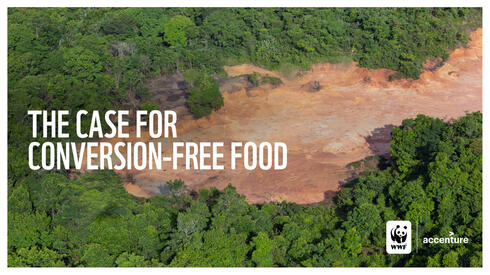Blueprint for future proofing shrimp supply chains
Farmed shrimp is an industry poised for transformation. Globally, shrimp is the most valuable traded seafood by volume, representing $32 billion in annual trade. Farmed shrimp has the potential to sustainably support the growing global demand for animal protein by producing more with less.
Even though farmed shrimp has been characterized as one of the most environmentally and socially destructive commodities, major industry actors have recently made progress working collaboratively to address sector-wide issues. The challenges and opportunities in farmed shrimp are emblematic of many food commodities. Thus, transforming shrimp supply chains offers an opportunity for businesses to apply learnings—in principle and practice—to other commodities. But how do we get there?
The Blueprint
After working in aquatic farming of shrimp for over 20 years, WWF has developed The Blueprint for Future Proofing Shrimp Supply Chains. This is a challenge to – and roadmap for – businesses that buy, sell, produce, or benefit from farmed shrimp to achieve the following by 2025:
- Traceability of farmed shrimp and the feed ingredients used in production
- No conversion of natural ecosystems post-1999 levels
- A 30% decrease in farm and feed use of natural resources
- Secure human and labor rights throughout the value chain
- Transparent reporting to track progress toward goals
Traceability
Traceability has become recognized as an integral tool to identify issues of food safety and food quality by governments and businesses—it is a form of information sharing that links supply chains and provides the necessary visibility into the social and environmental elements embedded in any product. When retailers can see what role farms, processors, or feed producers played in producing a product, they can be held accountable, and improvement measures can be taken so retailers can purchase and trade with confidence.
Learn how technologies like the transparenC app can increase visibility and accountability.
Conversion-free food
Around the world, critical natural habitats such as forests, grasslands, mangroves, wetlands, and peatlands continue to be converted into cropland, grazing land, or ponds for the expansion of food production. This race to clear land for agriculture and aquaculture results in greenhouse gas (GHG) emissions, habitat and biodiversity loss, disruption of water cycles (flooding and drought), increased soil erosion, and marginalizes the communities that depend on them. But, if these practices can be halted, our food systems have the potential to be a powerful lever for positive change and to help restore nature.
Learn how Geospatial Mapping can help.
Natural resource efficiency
To protect habitats, food production must not be wasteful or inefficient. Shrimp farming is resource-intensive, using large amounts of land, energy, water, and wild fish as a feed ingredient. To meet the growing demand for protein, we must produce more food with fewer resources. One solution to increase this efficiency in shrimp farming is called controlled Intensification – systems that enhance technology and operations to better use land, water, and energy, while increasing yields, survival rates, and farmer income.
Securing human rights
Global supply chains are long and may include tens of thousands of entities suppliers, manufacturers across the globe to produce raw materials and products, and impact hundreds of thousands of people and communities. Despite good faith efforts, supply chain diversity, complexity, and lack of transparency can obscure human and labor rights abuses. The UN International Labor Organization estimates that nearly 21 million people worldwide are victims of forced labor, including human trafficking, indentured work and bondage, and other equivalents of slavery. Even with the introduction of new policies and increased scrutiny in both the US and the EU, exploitative working conditions are prevalent in the food and agriculture sector.
Learn how the Seafood Task Force is working towards a more sustainable, ethical pathway.
Learn more about illegality in our supply chains.
Transparency
To realize the other pillars of the Blueprint, we must have transparency – companies must transparently report on their progress toward their goals. By setting achievable goals and demonstrating progress through transparent reporting and shared metrics, the shrimp industry can be the greatest agent for change. By pooling resources and data to achieve results, companies can avoid duplicating efforts, learn faster and catapult the industry toward a more sustainable future.
Read more on why Reporting Matters.
Call to action
WWF is calling on companies to help reimagine a more transparent and sustainable shrimp sector that protects the environment, natural resources, and human well-being with a radical level of transparency. The shrimp industry, NGOs, governments, and consumers must all work together to chart a new and better path toward positive, lasting change.
The transformation of farmed shrimp can and will be achieved through private sector collaboration and technological innovations that enable resource-efficient production and improved traceability. The risk of inaction is too high. We must act now, together.
 Dive into the report
Dive into the report
 Dive into the report
Dive into the report
 Dive into the report
Dive into the report

